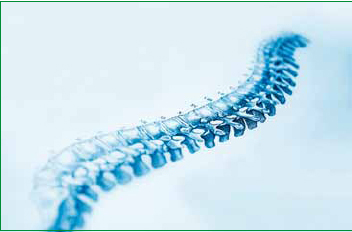In the UK, neck injury from blunt trauma is not an uncommon presentation in the emergency department (ED). However, the incidence of actual c-spine injury is low. Nevertheless, the majority of patients who present with blunt trauma neck pain are usually referred for radiography. It has been argued that this cautious approach is justified because of the potentially catastrophic consequences that may occur, should such an injury be misdiagnosed.
A prospective observational study, conducted over 24 months in two UK EDs, aimed to examine whether using the Canadian Cervical Spine Rule (CCR) could safely reduce the number of unnecessary c-spine radiographs undertaken in patients presenting with acute blunt neck trauma. In total, 148 doctors (including Senior House Officer grade through to consultants) were trained in the use of the CCR.
They were asked to assess eligible patients who had potential c-spine injuries using the CCR, but manage and treat them according to current practice. The doctors were also asked to rate their confidence in the CCR.
The study enrolled 1420 patients: 704 females (49.6%) and 716 males (50.4%). A flow diagram in the paper illustrates that actually 2796 patients were eligible to be included in the study, but the authors do not clearly explain why only just over half of these people were ultimately enrolled into the study. However, the authors do identify that the proportion of clinically important injury appeared to be similar for both the enrolled and non-enrolled patients (0.6% vs 0.5%, 95% CI).
C-spine radiography was performed on 987 patients (69.5%) who were enrolled in the study, with 8 (0.6%) having a confirmed c-spine injury. Had the CCR actually been used for radiological referral, only 815 people (57.4%) would have had X-rays, and no spinal injuries would have been missed. This would have resulted in a reduction of 172 (17.4%) unnecessary procedures.
In 202 cases, the range of motion element of the CCR was omitted by the examining clinician, with these patients subsequently being classified as indeterminate as they had not had the CCR applied in full.
Overall, the findings of this study indicated that no spinal injuries would have been missed if the outcome of the CCR had been used to decide whether or not to request radiography, as the CCR displayed a sensitivity of 100%, whether the indeterminate cases were excluded from the analysis, assumed to be negative for the CCR, or assumed to be positive for the CCR.
The authors identify some limitations to the study—for example, despite having a large number of patients in the study, there was a low incidence of c-spine injuries which prevents any statistical validation of the rule. In addition, there is the potential that despite the doctors being asked to follow usual practice in requesting radiographs, it is possible that the outcomes of the CCR may have influenced their decisions.
Nonetheless, the authors suggest that this study adds to the body of evidence supporting the use of the CCR in the clinical setting as an effective clinical assessment tool, and they identify that it is the first large-scale study to attempt to validate these clinical decision rules within a UK healthcare system as opposed to the Canadian healthcare system.
Prehospital research has been undertaken in Canada (Vaillancourt et al, 2009; Vaillancourt et al, 2011) which indicates that the CCR was reliably used by paramedics to reduce unnecessary c-spine immobilization.
Although there is no obvious reason to indicate that the CCR would not be a useful adjunct to patient assessment in UK paramedic practice, before there is any attempt to implement the CCR within the UK, the CCR would first need to be researched and validated within a UK prehospital setting, as would the ability of UK paramedics to use the CCR effectively.

